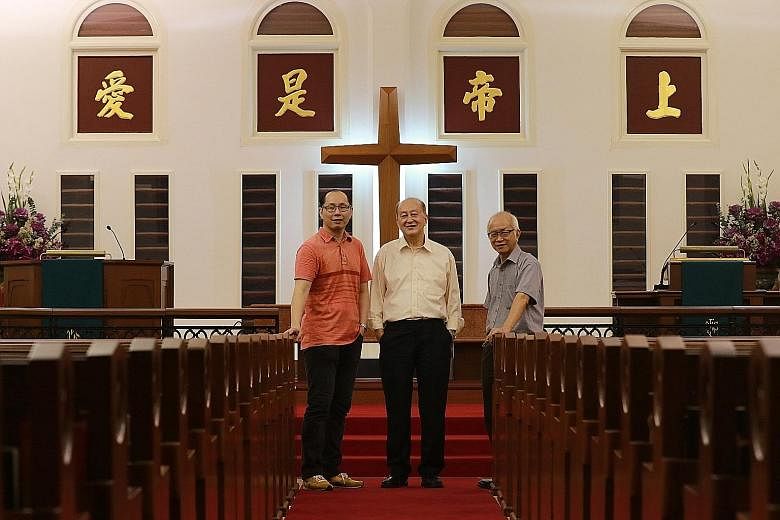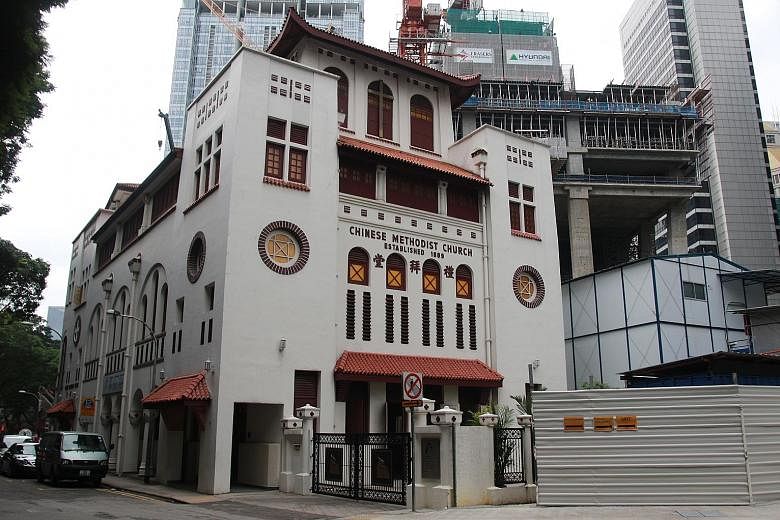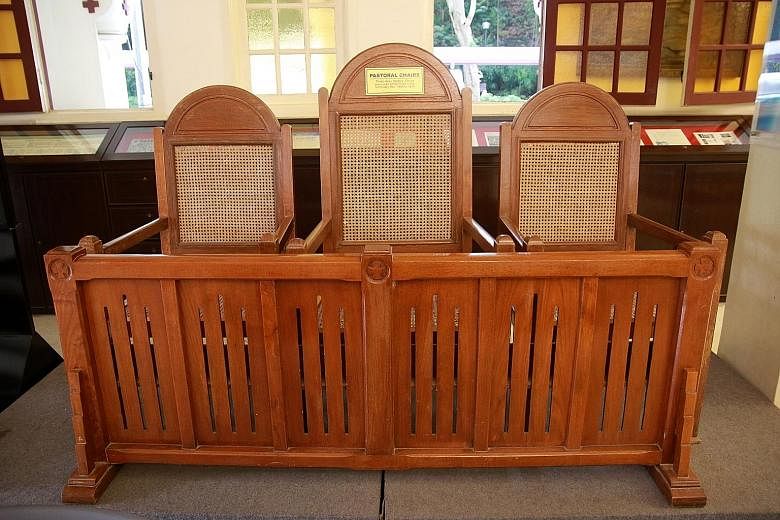It began as a spiritual haven for Chinese Methodists, served as a refuge from the Japanese during World War II, and now hosts worshippers of different language groups.
Telok Ayer Chinese Methodist Church has stood for more than a century in Telok Ayer Street. The building is an eclectic four-storey mix of Chinese and European architectural styles - a sign of its East-West roots.
Its origins, however, lay in a shophouse in Upper Nankin Street - today's Hong Lim Park - that was converted into a place for Sunday worship services in 1889 by Dr Benjamin West, an American medical doctor and Methodist missionary.
The services were conducted each week in Hokkien for the 30-odd parishioners, among them, recovering opium addicts who were patients of Dr West, according to historical records of the church.
As the congregation grew, temporary structures were built at different locations, until a permanent building was completed in 1925.
The land around the church has changed beyond recognition, with even the nearby seafront now reclaimed land.
-
1989
The year Telok Ayer Chinese Methodist Church was gazetted as a national monument.
But much of the church itself has been preserved, said Mr David Tay, 75, a long-time church member and the former chairman of the property committee.
"Although it's a small building, it took us five years to plan and complete the restoration project because we had to study all the architectural details and consult the government," said Mr Tay, who oversaw the $3 million restoration works from October 1993 to August 1995.
The church was gazetted as a national monument in 1989.
"It was very tedious as we didn't have the original plan. The records might have been lost during the Japanese Occupation and I had to be physically on-site all the time with the architect to make changes," added Mr Tay.
During the planning stage in 1991, Mr Tay suffered a heart attack while juggling work as a contractor and the church project.
He was warded for two weeks and was back to planning the restoration a month later.The painstaking efforts paid off. Among the most surprising discoveries were four original timber panels carved with Chinese characters covered in gold leaf that spelt out "shang di shi ai" ("God is love").
They were found hidden under wooden boards behind the altar on the second-floor sanctuary. The panels complement the six other Chinese characters lining the wall of the sanctuary: gong (respect), qian (piety), sheng (holiness), xin (faith), ren (benevolence) and ren (tolerance).
Why the four panels were hidden remains unclear, said Mr Tay. There's also a mystery surrounding the fate of the rooftop telescope once used to keep a lookout for the Japanese, who had been presumed to invade from the sea.
During wartime, the exterior walls of the church along the five-foot way were thickened to protect churchgoers and refugees from stray bullets and bomb shrapnel.
What is now a female toilet was once a small storeroom with a trapdoor where women and girls hid from the Japanese, added Mr Tay.
The church has undergone a number of changes, mainly to increase the space for an ever-growing congregation.
The rooftop garden was partially converted into a choir room in the 1990s, while the bell tower on the same level was converted into a space for Sunday school in the 1950s.
Living quarters for pastors and Chinese immigrants on the third storey were transformed into a library and more classrooms for Sunday school in the 1950s, catering to around 100 students each week.
A new building with audio-visual facilities and an education centre was completed in Wishart Road in 2004 and can seat 800 people.
Still, the church continues to be served by dedicated members, including Mr Tay's two sons, Edwin, 44, and Winston, 42 - both preachers at the church. Mr Tay's wife, Shirley, 68, has helped out at Sunday school for the last 20 years.
Services are now conducted in English, Mandarin, Hokkien and Bahasa Indonesia for its around 1,800 members.




